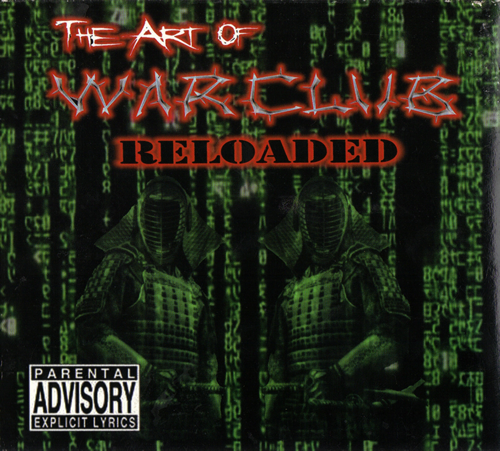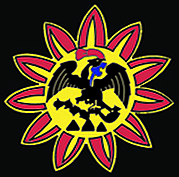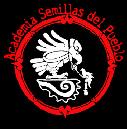Title: HOW AZTECS PLAYED THEIR
RUBBER MATCHES , By: Stokstad, Erik, Science, 00368075, 06/18/99, Vol.
284, Issue 5422
HOW AZTECS PLAYED THEIR RUBBER MATCHES
When 16th century Spanish clerics came to the New World, they were enthralled
by a fast-paced and sometimes bloody sport. Teams of up to six athletes
would whack heavy, solid balls through hoops several meters above the
stone courts using anything but their hands or feet. Apart from the
occasional postgame human sacrifice, what most astonished the Spanish
were the ricocheting balls. "I do not understand," wrote Pedro
Martyr, the official historian of the Spanish court in 1530, "how
when they hit the ground they are sent into the air with incredible
bounce." For Europeans used to playing with pigskins, the rubber
balls were practically miraculous.
The native Americans made their seemingly magical material, Martyr wrote, by collecting sap from lowland trees and mixing in juice from a vine. Four centuries later, this crude recipe has finally given up some of its secrets. On page 1988, researchers describe how the Olmec, Maya, and other ancient Mexican and Central American cultures turned raw latex into rubber. This feat of chemistry, which converts the slippery polymers in raw latex to a resilient structure, was not duplicated until the mid-19th century. "It's a marvelous example of technology demonstrated at an incredibly early stage," says Frank Bates, a polymer chemist at the University of Minnesota, Minneapolis.
The ball game, invented at least 3400 years ago, was an important ritual for many Mesoamerican societies. To the Maya, for instance, the game--called chaah--reenacted portions of their creation story. By the 5th century A.D., many towns had central stone courts, some of which could hold thousands of spectators. Leaders tested prophecies through tournaments, rival cities took out their aggressions on the court, and the rich placed huge wagers. According to a 16th century codex, the Aztec capital Tenochtitlan demanded 16,000 rubber balls each year as tribute from one province. The ballmakers "were the ancient equivalent of Rawlings," the sporting goods manufacturer, says Warren Hill, an archaeologist at the New World Archaeological Foundation of Brigham Young University in Provo, Utah. These societies also used rubber for a host of other products, including religious figurines, incense, and even lip balm.
Last summer, Massachusetts Institute of Technology (MIT) archaeologist Dorothy Hosler and undergrad Michael Tarkanian traveled to Chiapas, Mexico, to gather the raw materials for rubbermaking mentioned in ancient documents. To their surprise, they saw farmers collecting latex by slashing the bark of Castilla elastica trees, then mixing in juice from pulverized morning glory vines that wrap around the trees--just as the 400-year-old texts described. "It was amazing," recalls Tarkanian. "After about 10 minutes, a mass of rubber rose to the surface. We formed it into a ball that would easily bounce over your head."
The pair brought the ball, as well as raw latex and vine juice, back to their lab. A battery of tests showed that the homemade rubber was about twice as elastic as dried latex, which cracks when handled. With MIT materials scientist Sandra Burkett, the researchers probed the material with nuclear magnetic resonance spectroscopy, finding unidentified organic compounds in the latex that were absent from the rubber.
The team speculates that some of these mysterious compounds might be plasticizers, which would keep the latex runny by preventing its polymer molecules from linking to each other. (Modern rubber is made by cross-linking polymers.) If the vine juice dissolves the plasticizers, the researchers thought, polymer molecules would be more likely to entangle and form a rubbery mass. Although they failed to find direct evidence for cross-linking, they did discover vine juice components--traces of sulfonyl chlorides and sulfonic acids--that can react with polymers, stiffening segments and making them more likely to interact. The team says that only a few such entanglements would be enough to give the rubber its spring.
Understanding ancient rubbermaking "teaches
us how conscious these people were of their environment and how they
were able to manipulate it," Hosler says. She and her colleagues
next plan to test rubber made with varying amounts of vine juice to
see whether the Olmec, Maya, and Aztec could have engineered rubber
with specific elasticities. No matter what they find, the Mesoamericans
have earned the respect of modern chemists. "To discover [the process]
and refine it to make those products is impressive," says Bates.
"They probably had a pretty good R&D team."
War Club - Riotstage


Hear more War Cub music @
Mexica Uprising MySpace
Add Mexica Uprising to your
friends list to get updates, news,
enter contests, and get free revolutionary contraband.
Featured Link:
"If Brown (vs. Board of Education) was just about letting Black people into a White school, well we don’t care about that anymore. We don’t necessarily want to go to White schools. What we want to do is teach ourselves, teach our children the way we have of teaching. We don’t want to drink from a White water fountain...We don’t need a White water fountain. So the whole issue of segregation and the whole issue of the Civil Rights Movement is all within the box of White culture and White supremacy. We should not still be fighting for what they have. We are not interested in what they have because we have so much more and because the world is so much larger. And ultimately the White way, the American way, the neo liberal, capitalist way of life will eventually lead to our own destruction. And so it isn’t about an argument of joining neo liberalism, it’s about us being able, as human beings, to surpass the barrier."
- Marcos Aguilar (Principal, Academia Semillas del Pueblo)
![]()
Grow
a Mexica Garden
12/31/06
The
Aztecs: Their History,
Manners, and Customs by:
Lucien Biart
12/29/06
6 New Music Videos
Including
Dead Prez, Quinto Sol,
and Warclub
12/29/06
Kalpulli
"Mixcoatl" mp3 album
download Now Available
for Purchase
9/12/06
Che/Marcos/Zapata
T-shirt
Now Available for Purchase
7/31/06
M-1
"Til We Get There"
Music Video
7/31/06
Native
Guns "Champion"
Live Video
7/31/06
Sub-Comandante
Marcos
T-shirt Now Available for Purchase
7/26/06
11 New Music Videos Including
Dead Prez, Native Guns,
El Vuh, and Olmeca
7/10/06
Howard Zinn's
A People's
History of the United States
7/02/06
The
Tamil Tigers
7/02/06
The Sandinista
Revolution
6/26/06
The Cuban
Revolution
6/26/06
Che Guevara/Emiliano
Zapata
T-shirts Now in Stock
6/25/06
Free Online Books
4/01/06
"Decolonize"
and "Sub-verses"
from Aztlan Underground
Now Available for Purchase
4/01/06
Zapatista
"Ya Basta" T-shirt
Now Available for Purchase
3/19/06
An
Analytical Dictionary
of Nahuatl by Frances
Kartutten Download
3/19/06
Tattoo
Designs
2/8/06


